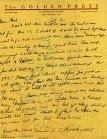The Pullman Strike
"More perhaps than any other industrial clash since the Civil War, the Pullman strike, or ''Debs Rebellion'' as it was named by the newspapers, shook the nation to its very depths, bringing to the surface all the pent-up bitterness of exploited labor, and exposing the role played by the federal government as the agent of the capitalists in their drive to crush completely the aims and activities of the labor movement."
– Philip Sheldon Foner, History of the Labor Movement in the United States 261 (1975)."When the employees of the Pullman Company walked away from their jobs on May 11, 1894, they began a process which was to result in one of the most significant encounters between labor and capital in American history."
– Daniel Novak, "The Pullman Strike Cases: Debs, Darrow, and the Labor Injunction" in AMERICAN POLITICAL TRIALS 121(Michal R. Belknap ed., 2d ed. 1994).

|

|

|
An English case that has been identified as the first involving the use of a labor injunction. Despite first being used in England, labor injunctions became much more widely used in the United States where they eventually became a common legal tool used against labor strikes. The first court in the United States to rely on the Springhead case was the Supreme Judicial Court of Massachusetts in Sherry v. Perkins, 147 Mass. 212, 17 N. E. 307 (1888).
Sherry v. Perkins, 147 Mass. 212, 17 N. E. 307 (1888).
The first American case in which a court issued a labor injunction.
United States v. Debs, 64 F. 724 (C.C. Ill. 1894).
Judge William A. Woods of the U.S. Circuit Court of Appeals for the Seventh Circuit found Debs and others guilty of contempt. They were sentenced to imprisonment in the county jail for terms varying from three to six months. This case reproduces the very expansive writ of injunction that was filed against Debs and the American Railway Union.
Brief and Argument for Petitioners Ex Parte Debs et. al. (1895).
Brief and arguments for a writ of habeas corpus in the Debs case signed by Clarence Darrow.
In re Debs, 158 U.S. 564, 15 S.Ct. 900 (1895).
The United States Supreme Court denied Debs' petition for a writ of habeas corpus and also held that in proceedings for contempt of court a defendant is not entitled to a jury trial. Clarence Darrow, S. S. Gregory, and Lyman Trumbull argued for Debs and the other petitioners.
Vegelahn v. Guntner, 167 Mass. 92, 44 N.E. 1077 (1896).
An important case involving the use of injunctions in a labor dispute that occurred a few months after the Pullman strike. Judge Oliver Wendell Holmes wrote a well-known dissent in the case: "I have seen the suggestion made that the conflict between employers and employed was not competition. But I venture to assume that none of my brethren would rely on that suggestion. If the policy on which our law is founded is too narrowly expressed in the term "free competition," we may substitute "free struggle for life."
The Pullman Correspondence.
John Peter Altgeld's commentary on the Pullman Strike. Altgeld was the governor of Illinois during the strike. Published in his 1899 book Live Questions.
The Pullman Company v. Randall Woodfolk, 121 Ill. App. 321 (1905).
Personal injury case involving the fellow-servant rule. It is not clear if Clarence Darrow himself worked on this case but the appellee, a sleeping car porter employed by the appellant Pullman Company, was represented by the firm of Darrow, Masters & Wilson. The court explains the relationship between Pullman cars and the railroads: "it is a matter of common knowledge, that appellant's chief business is the furnishing of sleeping accommodations for reward to passengers who have already paid the railway company for their transportation; that it never moves a car, and has no means of so doing; that its cars are attached to and detached from railway trains by the servants of the railway company on whose lines the cars are being hauled; that the moving power is furnished solely by such railway company; and that the duties of the servants of appellant in charge of the car are confined exclusively to the interior of the car, they having nothing to do with lights, brakes, signals or any other thing relating to transportation, or to the safety of the trains."
Bloom v. Illinois, 391 U.S. 194 (1968).
This 1968 case overruled In re Debs on the constitutionality of imposing punishment for contempt. The Court ruled: "[I]n our judgment, when serious punishment for contempt is contemplated, rejecting a demand for jury trial cannot be squared with the Constitution or justified by considerations of efficiency or the desirability of vindicating the authority of the court." (p. 208).
"Also published statements of the company during the continuance of the strike."
Proclamations from President Cleveland.
President Cleveland sent federal military troops to Chicago on July 3, 1894 under authority of Sections 5298 and 5299 of the Revised Statutes of the United States. But the use of federal troops under section 5298 must be preceded by a proclamation that is required under Section 5300 which provides: "Whenever in the judgment of the President it becomes necessary to use the military forces under this title the President shall forthwith, by proclamation, command the insurgents to disperse and retire peaceably to their respective abodes within a limited time." However, federal troops had been dispatched to Chicago six days before Attorney General Olney realized that a presidential proclamation as required by section 5300 had not been made. So belatedly, President Cleveland issued a proclamation on July 8. He issued another proclamation on July 9 to warn rioters in other parts of the country.
Governor Altgeld's Protest Against the Use of United States Troops in Illinois (1894).
Governor Altgeld sent this message to President Cleveland, strongly protesting Cleveland's decision to send federal troops to Chicago. Cleveland sent the troops even though they were not requested by any officials in Illinois and without informing Altgeld.
Report on the Chicago Strike of June-July, 1894: With Appendices Containing Testimony, Proceedings, and Recommendations.
Report made by Strike Commission at the direction of President Cleveland.
The Use of the Army in Aid of the Civil Power by Guido Norman Lieber, Judge Advocate General, U.S. Army (1898).
Includes discussion of the use of federal troops during the Pullman strike.
A Compilation of Documents Relating to Injunctions in Conspiracy Cases (1902).
Clarence Darrow discusses the Pullman strike as an example of the dangers of the government's use of conspiracy laws. Darrow's statement begins on page 14, which is page 17 of the pdf.
Federal Aid in Domestic Disturbances 1787 - 1903.
Senate study of the use of the military during domestic unrest. Includes a section on the Pullman strike and the Coeur D'Alene troubles of 1899 in Idaho.
Hearings Before the Committee on Labor on Pending Anti-Injunction Bills (1912).
The injunction used in the Pullman strike is referred to several times.
Article critical of the Pullman labor strike and discussing ways to prevent strikes.
The Injunction As A Remedy For The Boycott by Herbert S. Bullard.
An 1894 Yale Law Journal review article in favor of writs of injunction under equity to counteract boycotts.
Legal Restraint of Labor Strikes (1895).
Article critical of the Pullman strike and in favor of labor injunctions.
Injunctions Against Strikes, Boycotts and Similar Unlawful Acts (1907).
Law review article examining the evolution and current status of labor injunctions.
President Cleveland's views about the strike delivered in a 1904 lecture that was published in 1913.
The Federal Government and the Chicago Strike by Eugene V. Debs.
Debs' response to an article entitled, "The Government in the Chicago Strike of 1894," written by Former President Grover Cleveland that was published in McClure's magazine in July 1904.
"The American Republic and the Debs Insurrection" by Z. Swift Holbrook (1895).
This essay discusses the social and political causes of the Debs insurrection, and is highly critical of Debs.
A study of the Town of Pullman less than four years after it was founded. Published in 70 Harper's Magazine pp. 452-466.
An Appeal for Aid - Debs Legal Defense Fund (1894).
Published in the American Federationist by Samuel Gompers, American Federation of Labor, AFL-CIO.
The Debs Case and Trial by Jury by Clarence Darrow (1896).
Published in The Cause.
Letter to the Editor from Clarence Darrow (1897).
Reprint of a letter from Darrow to the editor of The Cause discussing the Pullman strike court injunction. Darrow is dissatisfied with prior commentary about the case.
Marvin Hughitt -- Builder (1922).
Article about Marvin Hughitt, president of the Chicago & North Western Railway published in Illustrated World. Hughitt was the president when Clarence Darrow worked as general counsel for Chicago & North Western Railway. Most accounts state that Darrow resigned his position as the general counsel for the Chicago & Northwestern Railway after meeting with Marvin Hughitt. Darrow told Hughitt that he had to resign so he could help defend Eugene Debs and other union leaders.
Pullman exhibit, World's Columbian Exposition, Chicago 1893.
The Law of Strikes, Lockouts and Labor Organizations by Thomas S. Cogley (1894).
Chapter IX of this treatise discusses the state of the law in 1894 regarding the use of injunctions and other civil remedies.
Debs: His Life, Writings, and Speeches (1908).
Several references are made to Clarence Darrow and his actions while representing Debs.
The Life of Lyman Trumbull by Horace White (1913).
A former senator, Lyman Trumbull and S.S. Gregory worked with Clarence Darrow as associate counsel during the appeal of the Debs decision to the United States Supreme Court. Trumbull argued the appeal before the Court.
Labor and Freedom: The Voice and Pen of Eugene V. Debs (1916).
Compilation of writings and speeches by Eugene Debs.
The Story of the Pullman Car by Joseph Husband (1917).
Illustrated story of early rail transportation and the Pullman Car company.
Debs: His Authorized Life and Letters from Woodstock Prison to Atlanta (1919).
Book written while Debs was in federal prison serving a ten-year sentence for violating the Espionage Act. The Pullman strike and Darrow's work in defense of Debs is recounted.
Debs and the Poets (1920).
Collection of poems and letters written in honor of Eugene Debs while he was in the Atlanta Federal Penitentiary. Debs was sent there after being convicted of violating the Espionage Act because of his opposition to World War I. Introduction by Upton Sinclair.
About Clarence Darrow (1922).
Excerpt from Talks with Debs in Terre Haute: (and Letters from Lindlahr) by David Karsner. Debs referred to Darrow as "an unhappy philosopher who had crowded many events into his life; who had, in fact, seen it all, and had no more illusions to be broken."
Walls and Bars by Eugene Victor Debs (1927).
Debs writes about his experiences in prison.
Carroll D. Wright, United States Commissioner of Labor and a member of the United States Strike Commission which investigated the causes of the Pullman strike, penned this article. The Commission issued a comprehensive report on the results of the investigation.
Proceedings of the General Managers' Association (1894).
The General Managers' Association (GMA) represented the Pullman company and twenty-four railroads with terminals entering or terminating in Chicago. The railroads represented by the GMA employed more than one-fourth of all the railroad workers in the United States. The GMA played a key role in battling the American Railway Union during the strike.
Peace By Standing Army.
Speech by Henry George given at a labour meeting in Cooper Union, New York, July 12, 1894. The meeting was called to protest against President Cleveland's sending Federal troops to Chicago during the Pullman railroad strike.
The Pullman Strike by William H. Carwardine (1894).
Carwardine was pastor of the First M.E. Church in the town of Pullman, Illinois for two years prior to the strike.
The Insurrection of June and July 1894 Growing out of the Pullman Strike at Chicago.
An Address Delivered before the National Statistical Association of Columbian University, Washington D.C. by Joseph Nimmo, Jr. LL.D.
Special Address - The Chicago Strike of 1894 by Edgar A. Bancroft.
Published in the Proceedings of the Illinois State Bar Association at its Eighteenth Annual Meeting held in Springfield, January 24 and 25, 1895.
Eighteenth Annual American Bar Association meeting.
Summary of the 18th annual American Bar Association meeting in 1895. The highlighted area on the last page has a short passage about Judge William Howard Taft who took issue with Governor Altgeld's criticism of the federal courts and an observation about the Debs injunction. Taft was on the United States Circuit Court for the Sixth Circuit at this time. During his career, Taft served as the Solicitor General of the United States, Chief Justice of the U.S. Supreme Court and President of the United States.
Liberty by Eugene Debs.
Speech delivered by Debs at Battery D, Chicago, on his release from Woodstock jail, November 22, 1895.
Thomas E. Milchrist.
Short bio of Thomas E. Milchrist the U.S. District Attorney for the Northern District of Illinois during the Pullman strike. Milchrist helped prosecute Eugene Debs.
Proceedings of 8th annual National Convention of Railroad Commissioners (May 1896).
Contains a report on protecting public interests during railway strikes and discusses proposed federal bills. Also references the Pullman strike.
Lyman Trumbull.
Short bio of Lyman Trumbull who worked on the Debs defense with Clarence Darrow. From the Bench and Bar of Illinois.
Judge William A. Woods.
Short bio of Judge William A. Woods who along with Judge Peter Grosscup issued the injunction against Eugene V. Debs and the American Railway Union (ARU). In September 1894 Judge Woods presided over the civil contempt proceedings in which Debs and other ARU leaders were charged with violating the injunction. In December Judge Woods found the defendants had violated the injunction in United States v. Debs, 64 F. 724 (C.C.Ill. 1894). He later sentenced them to jail. From the The Bench and Bar of Illinois: Historical and Reminiscent (1899).
Judge Peter S. Grosscup.
Short bio of Judge Peter Grosscup who along with Judge William A. Woods issued the injunction against Eugene V. Debs and the American Railway Union.
Photos
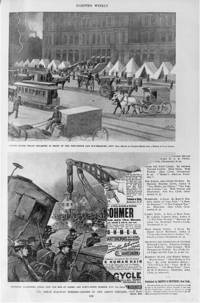
The Great Railway Strikes - Scenes in and about Chicago. United States Troops encamped in front of the post-office and sub-treasury, July 10th / drawn by Charles Mente from a sketch by G.A. Coffin -- National Guardsmen firing into the mob at Loomis and Forty-ninth Streets, July 7th. Illustrated in: Harper's Weekly, 1894, p. 689. Library of Congress Prints and Photographs Division , LC-USZ62-75203. |
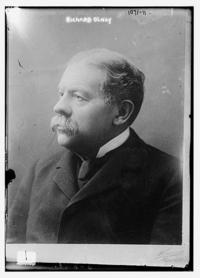
Richard Olney. In 1893 Richard Olney was appointed to be Attorney General by President Grover Cleveland. Prior to 1893, Olney had worked as a director or legal counsel to several railroads, including some of those that were part of the General Managers' Association (GMA). The GMA represented numerous large railroads and the Pullman company. While Olney earned an annual salary of $8,000 as Attorney General, he was still being paid more than $10,000 as a legal advisor to the Chicago, Burlington, and Quincy railroads. This created a clear conflict of interest when the Pullman strike began. Before he accepted the position of Attorney General, Olney asked for and was given assurances that he could continue as legal advisor to these railroads. The close working relationship between Olney, government personnel who reported to him, federal judges and the GMA would be severely criticized both during and after the Pullman strike. LC-DIG-ggbain-05196, Library of Congress Prints and Photographs Division. |
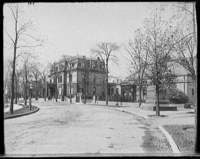
The Pullman Residence, Chicago c. 1900. Pullman commissioned John M. Dunphy to build this mansion at 1729 S. Prairie Ave. Completed in 1876 the three-story greystone mansion was valued between $350,000 and $500,000. The mansion had a large theater, bowling alley, conservatory and a billiard room. It was heavily guarded during the 1894 strike. Mrs. Pullman followed her late husband's will and had the mansion had demolished in 1922. LC-D4-12552, Library of Congress Prints and Photographs Division. |
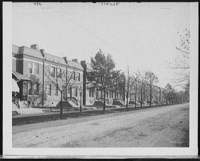
Workmen's houses, Pullman, Illinois (between 1890 and 1901). LC-D4-12562, Library of Congress Prints and Photographs Division. |
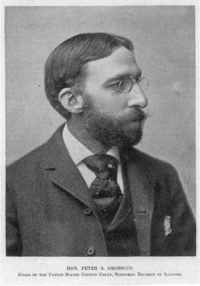
Judge Peter S. Grosscup. Judge of the United States Circuit Court, Northern District of Illinois. Judge Grosscup and Judge William Woods issued the injunction that was largely written by Thomas Milchrist. Judge Grosscup later served as the part-time dean of Northwestern University School of Law from 1898 to 1901. After his resignation, John H. Wigmore became Dean. Illustrated in Harper's Weekly, v. 38, (1894 July 28), p. 700. LC-USZ6-1529, Library of Congress Prints and Photographs Division. |
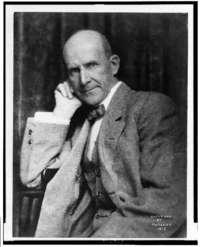
Eugene Victor Debs c. 1912. Clarence Darrow wrote in his autobiography: "Eugene V. Debs has always been one of my heroes. . . . There may have lived some time, some where, a kindlier, gentler, more generous man than Eugene V. Debs, but I have never known him. Nor have I ever read or heard of another. . . . He was not only all that I have said, but he was the bravest man I ever knew. He never felt fear. He had the courage of the babe who has no conception of the work or its meaning." Library of Congress Prints and Photographs Division, LC-USZ62-106026. Debs Letter to Darrow |
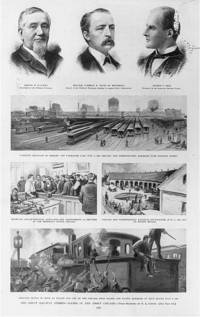
The Great Railway Strikes - Scenes in and about Chicago. Three bust portraits showing George Pullman, Cushman K. Davis, and Eugene Debs; and four illustrations showing "blockade of railroad cars, applicants for appointments as deputies at the marshal's office, roundhouse, and deputies trying to move an engine and car at Blue Island." Illustrated in: Harper's Weekly, 1894, p. 656. Library of Congress, LC-USZ62-75202. |
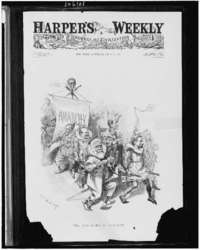
Caricature of Eugene Debs, wearing crown labeled "Debs Am. railway union", being carried in front of banner "anarchy", with Waite, Altgeld, Pennoyer, Peffer, and others. Illustration in: Harper's Weekly, 1894 July 21. p. 673. Library of Congress, LC-USZ62-106101. Debs Letter to Darrow |
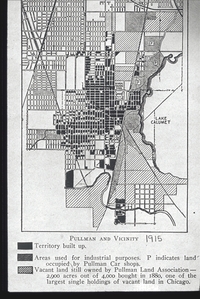 Pullman and Vicinity. |
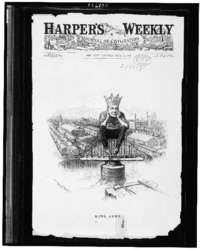 Caricature of Eugene Debs, wearing crown labeled "Deb's American railway union", seated on section of bridge "highway of trade", in body of water. Illustrated in Harper's Weekly, 1894 July 14, p. 649. Library of Congress, LC-USZ62-106100. Debs Letter to Darrow |
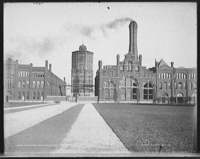 Water Tower and Shop's Entrance, Pullman, Illinois, between 1890 and 1901. LC-D4-12560, Library of Congress Prints and Photographs Division. |
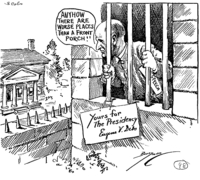 Yours for the Presidency, Eugene V. Debs. This cartoon depicts Eugene V. Debs and his quest for the presidency. Debs campaigned while in prison for denouncing the U.S. entry into World War I. National Archives and Records Administration, ARC Identifier 306114. Debs Letter to Darrow |
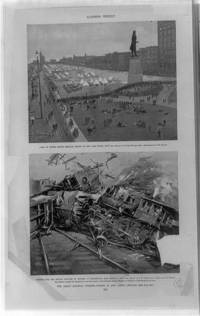 The Great Railway Strikes - Scenes in and about Chicago. Camp of United States regular troops on the lake front, July 6 / drawn by T. Dart Walker from a photograph by J.W. Taylor -- Freight-cars and engine wrecked by rioters at Kensington, near Pullman, July 6th / drawn by G.W. Peters, from a sketch by G.A. Coffin. Illustrated in: Harper's Weekly, 1894 July 21, p. 688. Library of Congress, LC-USZ62-96506. |
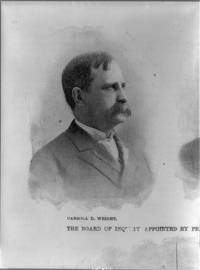 Carroll D. Wright. Carroll Wright was chairman of the commission which investigated the Pullman Strike. Wright was also a lawyer, a renowned statistician, and the United States Commissioner of Labor for twenty years from 1885 to 1905. Among numerous other positions he served as chief of the Massachusetts Bureau of Statistics of Labor. Frank Leslie's Illustrated Newspaper, 1894 Aug. 9, p. 86. LC-USZ62-96527, Library of Congress. |
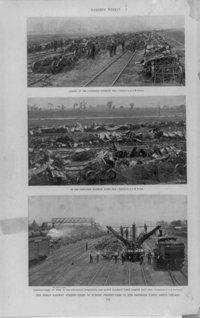 The Great Railway Strikes -- Miles of Burned Freight-cars in the Railroad Yards about Chicago. Looking up the panhandle railroad / from a photograph by J.W. Taylor -- In the panhandle railroad yards / from a photograph by J.W. Taylor -- Wrecking-crew at work in the Cincinnati, Burlington, and Quincy Railroad yards, looking east / from a photograph by R.D. Cleveland. Illustrated in: Harper's Weekly, 1894 July 28, p. 704. Library of Congress, LC-USZ62-96509. |
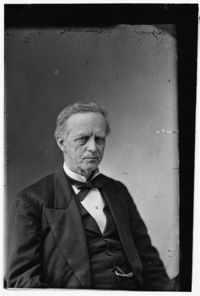 Lyman Trumbull [between 1870 and 1880]. Lyman Trumbull (1813 - 1896) was a United States Senator from Illinois during the American Civil War. Clarence Darrow worked with Lyman Trumbull and S.S. Gregory as associate counsel during Eugene Debs appeal to the United States Supreme Court. Trumbull volunteered his service and refused a fee and only accepted traveling expenses. Trumbull argued the appeal before the Court. During the impeachment trial of President Andrew Johnson, Trumbull broke party ranks, and was one of only seven Republican senators that voted for acquittal in a courageous act of political suicide. The seven Republican senators were concerned that the proceedings had been manipulated so that only one side of the evidence was presented. Trumbull was chairman of the Judiciary Committee from 1861-1872. He co-authored the Thirteenth Amendment, which prohibited all kinds of slavery in the United States. It was passed by Congress on January 31, 1865, and ratified on December 6, 1865. LC-DIG-cwpbh-03888, Library of Congress Prints and Photographs Division. |
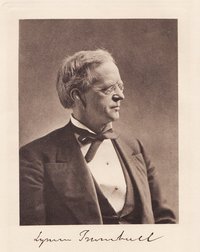 Lyman Trumbull. In his autobiography The Story of My Life Clarence Darrow wrote: "Debs was sentenced to six months imprisonment in jail and his associates to three months. We then took the case to the Supreme Court of the United States. For this hearing, Mr. Lyman Trumbull volunteered to argue it with us. He had been a judge of the Supreme Court of Illinois, and was for many years a United States senator. His vote in Andrew Johnson's impeachment trial went far to prevent his impeachment. He wrote the Fourteenth Amendment and was the author of much other important legislation of his day. He, like the rest of us, received nothing but expenses for his services." |
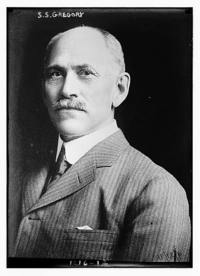 S.S. Gregory. "After the strike was over, the cases of Mr. Debs and his associates were called in court. Mr. S.S. Gregory consented to go into the trial of these cases with me. Mr. Gregory was one of the best lawyers I have ever known. He was emotional and sympathetic, he was devoted to the principles of liberty and always fought for the poor and oppressed. In spite of all this, he had a fine practice, and his ability and learning were thoroughly recognized. He at one time was president of the American Bar Association, and his legal attainments were everywhere acknowledged." Clarence Darrow, The Story of My Life. Library of Congress Prints and Photographs Division, LC-DIG-ggbain-06250. |
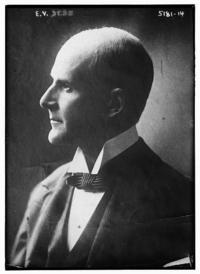 Eugene V. Debs. Library of Congress Prints and Photographs Division, LC-DIG-ggbain-30403. |
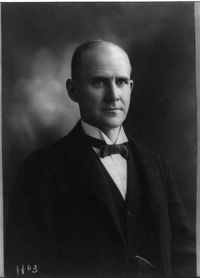 Eugene V. Debs. The American Railway Union (ARU), with about 150,000 railroad employees as members, was organized in Chicago on June 20, 1893. Eugene Debs was the founder and leader of the ARU, which was the largest union of its time, and one of the first industrial unions in the United States. The ARU, in contrast to other trade unions, sought to unionize all railway workers instead of limiting members to a particular craft or service. Library of Congress Prints and Photographs Division, LC-USZ62-24198. |
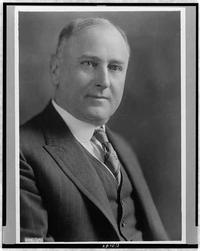 Attorney General of the United States, Harry M. Daugherty. Harry Daugherty was appointed the Attorney General of the United States by President Warren G. Harding. He served from March 1921 until April 1924. Eugene Debs was convicted in 1918 for violating the Espionage Act. Daugherty influenced President Harding to commute Debs' sentence and Debs was released on December 25, 1921. Library of Congress Prints and Photographs Division, LC-USZ62-118044. |
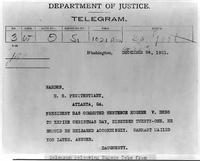 Telegram Announcing that President Harding Commuted Debs Sentence. Eugene Debs was convicted in 1918 for violating the Espionage Act. President Harding commuted Debs' sentence to be effective December 25, 1921. This telegram was sent by the United States Attorney General to the Warden at the U.S. Penitentiary in Atlanta. |
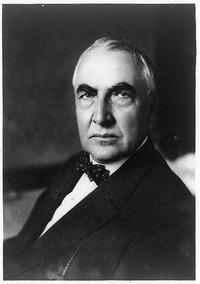 Warren G. Harding c. 1920. Eugene Debs was convicted in 1918 for violating the Espionage Act for an anti-war speech he gave in Canton, Ohio in June 1918 and for interfering with military recruitment. Debs was sentenced to ten years in prison and his conviction and sentence were upheld by the United States Supreme Court. Clarence Darrow later worked trying to get Debs pardoned or his sentence commuted. Darrow appealed to President Wilson and his Attorney General Alexander Mitchell Palmer, both Democrats, but they refused to pardon Debs. But later President Warren G. Harding commuted Debs' sentence to time served and he was released on December 25, 1921. Library of Congress, LC-USZ62-91485. |
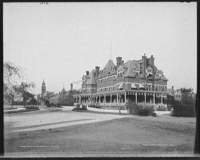 Hotel Florence, Pullman, Illinois [between 1890 and 1901]. Hotel Florence opened on November 1, 1881 as the hospitality showcase for visitors to George Pullman's "perfect town" of Pullman. The hotel was named for George Pullman's favorite daughter, Florence. It cost $100,000 to build and over $30,000 worth interior fixtures and furnishings were installed. The hotel is now part of the Pullman State Historic Site. Library of Congress Prints and Photographs Division, LC-D4-12559. |
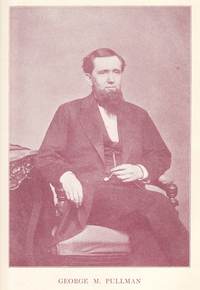 George M. Pullman. George Mortimer Pullman was born on March 3, 1831 in Brocton, New York. Pullman dropped out of school at age 14 and eventually became a building mover. He moved to Chicago in 1859 when he was 28 years old. A few years earlier the city of Chicago had begun to install a new sewer system that would drain into the river. But the new pipes were laid above ground, and new streets and fixtures were built up to this new grade which in some areas was up to 10 feet above ground. This left some existing buildings below street level and stairs were needed to access the streets - or the buildings themselves had to be raised. Pullman developed a system of raising buildings by employing hundreds men who were assigned to jacks. The system worked and Pullman became famous in Chicago and he earned a lot of money. He used this money to start the Pullman Palace Car Company. |
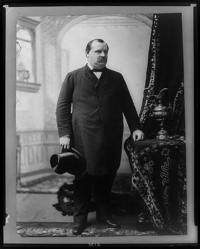 Grover Cleveland. After he ordered federal troops into Chicago, President Cleveland belatedly issued the required proclamation warning rioters: "Now, therefore, I, Grover Cleveland, President of the United States, do hereby admonish all good citizens and all persons who may be or may come within the city and State aforesaid, against aiding, countenancing, encouraging, or taking any part in such unlawful obstructions, combinations and assemblages; and I hereby warn all persons engaged in or in any way connected with such unlawful obstructions ... to disperse and retire peaceably to their respective abodes on or before twelve o'clock noon on the ninth day of July instant. Those who disregard this warning and persist in taking part with a riotous mob in forcibly resisting and obstructing the execution of the laws of the United States ... can not be regarded otherwise than as public enemies." Library of Congress Prints and Photographs Division, LC-USZ62-7618. |
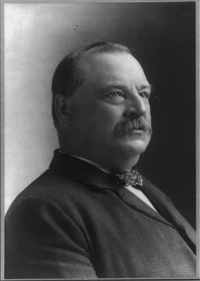 President Grover Cleveland c. 1892. On July 3, 1894 President Cleveland ordered the federal troops to move into Chicago. Cleveland reportedly declared, "If it takes the entire army and navy of the United States to deliver a post card in Chicago, that card will be delivered." Illinois Governor Altgeld was not advised of this serious escalation and was justifiably outraged. Library of Congress Prints and Photographs Division, LC-USZ62-48559. |
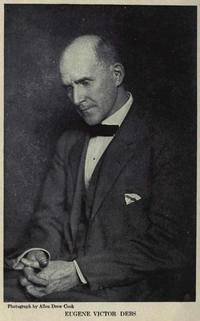 Eugene Victor Debs. Eugene Debs was initially very wary of calling a boycott against Pullman cars but he issued this directive: "June 26, 1894, 1:30 p.m. Boycott against Pullman cars in effect at noon to-day. By order of convention. E. V. Debs." Debs Letter to Darrow |
 Eugene V. Debs. Debs testified before the Strike Commission where he described the power and effect of the labor injunction: "As soon as the employees found that we were arrested and taken from the scene of action, they became demoralized, and that ended the strike. It was not the soldiers that ended the strike; it was not the old brotherhoods that ended the strike; it was simply the United States courts that ended the strike. Our men were in a position that never would have been shaken under any circumstances if we had been permitted to remain upon the field, remain among them; but once that we were taken from the scene of action and restrained from sending telegrams or issuing the orders necessary, or answering questions ... The headquarters were demoralized and abandoned, and we could not answer any telegrams or questions that would come in ... The men went back to work, and the ranks were broken, and the strike was broken up by the Federal courts of the United States, and not by the Army, and not by any other power, but simply and solely by the action of the United States courts in restraining us from discharging our duties as officers and representatives of the employees." Debs Letter to Darrow |
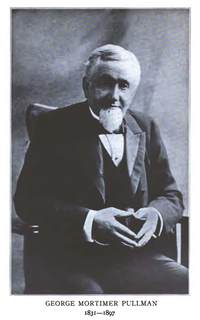 George Mortimer Pullman 1831-1897. George Pullman died on October 19, 1897. To prevent disgruntled former employees from desecrating his grave at Graceland cemetery, his family took precautions by burying him at night in a lead-lined casket placed in an eight foot deep pit with the floors and walls lined with steel-reinforced concrete. The casket was then covered with asphalt, concrete and steel rails. A Corinthian column was then placed over the grave. |
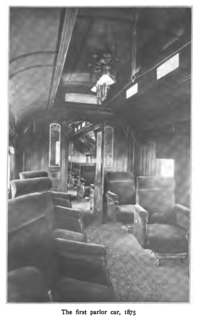 The First Pullman Parlor Car, 1875. From The Story of the Pullman Car by Joseph Husband (1917). |
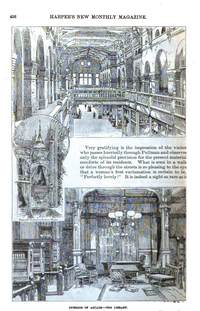 Interior of Arcade - The Library in the Town of Pullman. From "Pullman: A Social Study" by Richard T. Ely. Harper's Magazine vol.70 (February 1885): 452-466. |
 Pullman Compartment Cars - Interior of Dining Cars on the Cincinnati, Hamilton & Dayton R.R. "Print shows two men seated at a table in a dining car on a train being served by an African American porter." Library of Congress Prints and Photographs Division, LC-DIG-ppmsca-07433. |
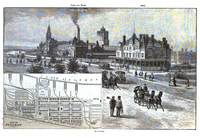 Town of Pullman. From "Pullman: A Social Study" by Richard T. Ely. Harper's Magazine vol.70 (February 1885): 452-466. |
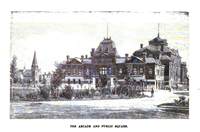 The Arcade and Public Square in the Town of Pullman. From "Pullman: A Social Study" by Richard T. Ely. Harper's Magazine vol.70 (February 1885): 452-466. |
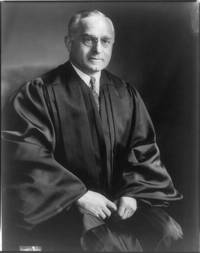 Justice Felix Frankfurter. Future Supreme Court Justice Felix Frankfurter co-wrote an article in 1929 that stated in the Debs case "the Supreme Court of the United States for the first time in its history passed on the scope and validity of an injunction in a labor controversy." Felix Frankfurter & Nathan Greene, Legislation Affecting Labor Injunctions, 38 YALE L. J. 879 (1929). Library of Congress Prints and Photographs Division, LC-USZ62-36966. |
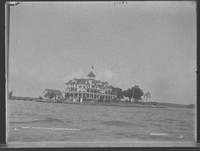 Pullman House, Thousand Islands [between 1890 and 1901]. During part of the strike Pullman and his family left Chicago and spent time at their home on the St. Lawrence River. Library of Congress Prints and Photographs Division, LC-D4-8802. |
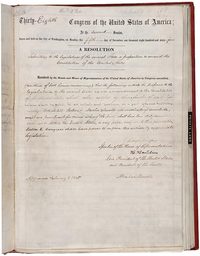 13th Amendment to the U.S. Constitution: Abolition of Slavery (1865). Passed by Congress on January 31, 1865, and ratified on December 6, 1865, the 13th amendment abolished slavery in the United States. Lyman Trumbull is considered a co-author of the 13th Amendment. Trumbull and S.S. Gregory worked with Clarence Darrow as associate counsel during the appeal of the Debs decision to the United States Supreme Court. Trumbull volunteered his service and refused a fee and only accepted traveling expenses. Trumbull argued the appeal before the Court. Image from Our Documents 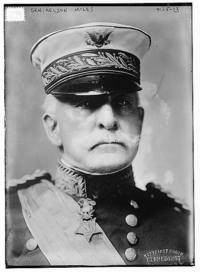 General Nelson Miles. General Miles commanded the federal troops employed in the suppression of the Pullman strike. Miles initially opposed sending federal troops. Library of Congress Prints and Photographs Division, LC-DIG-ggbain-23781. 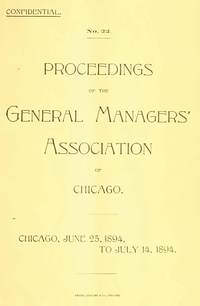 Proceedings of the General Managers' Association. The General Managers' Association (GMA) represented the Pullman company and twenty-four railroads with terminals entering or terminating in Chicago. The railroads represented by the GMA employed more than one-fourth of all the railroad workers in the United States. The GMA played a key role in battling the American Railway Union during the strike. Full-text available above. | ||
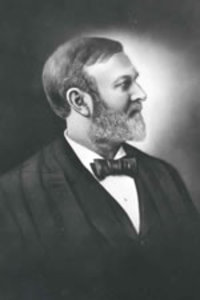 Justice William Allen Woods. On July 2, 1894 Judge William A. Woods of the U.S. Circuit Court of Appeals for the Seventh Circuit and Judge Peter L. Grosscup of the U.S. District Court issued an injunction requested by Attorney General Olney against the American Railway Union (ARU). Later Judge Woods and Judge Grosscup issued criminal indictments charging Eugene Debs and other ARU officials with obstructing the U.S. mail and conspiracy to interfere with interstate commerce. In September 1894 Judge Woods presided over the civil contempt proceedings in which Debs and other ARU leaders were charged with violating the injunction. In December Judge Woods found the defendants had violated the injunction in United States v. Debs, 64 F. 724 (C.C.Ill. 1894). He later sentenced them to jail. Photo is from the official portrait of Justice Woods, which hangs in the Supreme Court Courtroom in Indianapolis. |
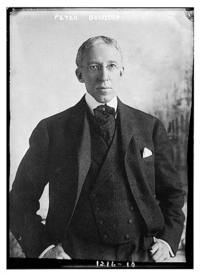 Judge Peter Grosscup. In 1892, President Benjamin Harrison appointed Peter Grosscup to the U.S. District Court of the Northern District of Illinois. Judge Grosscup sat with Judge William A. Woods on the U.S. circuit court when they issued the injunction against Eugene Debs and the American Railway Union officers during the Pullman strike. Eight days after the injunction was issued Judge Woods and Judge Grosscup issued indictments charging Debs and other ARU officials with obstructing the U.S. mail and conspiracy to interfere with interstate commerce. Judge Grosscup instructed the grand jury that indicted Debs and the others. Grosscup was the trial judge during Debs' criminal trial which ended when the Grosscup declared a mistrial because a juror became ill. The defense strongly suspected the mistrial was declared because the criminal trial was going badly for the government. In 1899, President William McKinley appointed Grosscup, a friend of his, to the U.S. Circuit Court of Appeals for the Seventh Circuit. Grosscup later served as the part-time dean of Northwestern University School of Law from 1898 to 1901. Library of Congress Prints and Photographs Division, LC-DIG-ggbain-06248. |
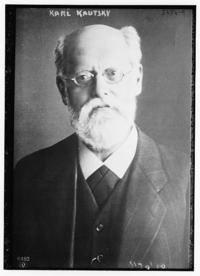 Karl Kautsky. Eugene Debs was influenced by the writings of Karl Kautsky who expounded on the philosophy of Karl Marx. Kautsky was one of the more important influences that led Debs to become a socialist. Library of Congress Prints and Photographs Division, LC-DIG-ggbain-30969. |
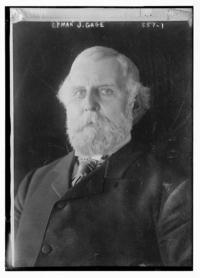 Lyman J. Gage. Lyman Gage was a financier who held several political appointments. He was also the first president of the Chicago Civic Federation founded in 1893. The Chicago Civic Federation was a civic reform group concerned about social problems and government waste and ineffectiveness. This organization twice urged the Pullman company and the union to negotiate and submit the issues to arbitration. But the company refused to arbitrate and it also informed the Civic Federation that wages and rents in the town of Pullman were totally separate issues. Library of Congress Prints and Photographs Division, LC-DIG-ggbain-02637. |
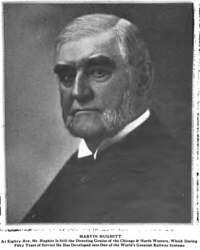 Marvin Hughitt. Marvin Hughitt was president of the Chicago & North Western Railway when Clarence Darrow began working in the railway's legal department. According to most accounts, in 1894 Clarence Darrow resigned his position as general counsel for the Chicago & Northwestern Railway after meeting with Hughitt. Darrow told Hughitt that he had to resign so he could help defend Eugene Debs and other union leaders. But this mythical account originated with Irving Stone's biography Clarence Darrow for the Defense. Later accounts explain that Darrow actually resigned in 1893 after William Goudy, general counsel for the Chicago & Northwestern Railway, died in April 1893. Photo is from 37 Illustrated World, 199 (1922). |
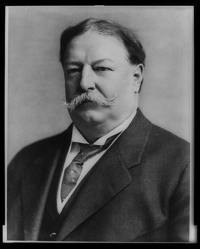 William Howard Taft. William Howard Taft was appointed in March 1862 as the second circuit judge to serve on the newly-created United States Court of Appeals for the Sixth Circuit. As a federal judge Taft followed the Pullman strike very closely. In some of his private letters he revealed his views. On July 7, 1894 he wrote to his wife: "The situation in Chicago is very alarming and distressing and until they have had much bloodletting, it will not be better. The situation is complicated by the demagogues and populists ... who are continually encouraging resistance to federal authority. Word comes tonight that thirty men have been killed by the federal troops. Though it is bloody business, everybody hopes that it is true." The next day he wrote her again: "The Chicago situation is not much improved. They have only killed six of the mob as yet. This is hardly enough to make an impression." Library of Congress Prints and Photographs Division, LC-USZ62-13027. |
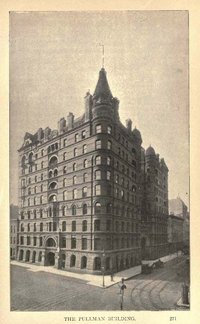 The Pullman Building. In 1884 George Pullman bought a parcel of land on the Southwest corner of Michigan Avenue and Adams Street just to the east of Chicago's central business district. He spent about $800,000 to build this skyscraper that would contain Pullman Palace Car Company offices and apartments. George Pullman's office was on the ninth floor just below the corner turret with a flag pole. During the legal battle in the aftermath of the Pullman boycott Clarence Darrow subpoenaed George Pullman to testify but when the deputy marshal arrived at the Pullman Building with the writ, he was told that Pullman was not in. Later when Pullman was notified of the subpoena he left by a side exit and soon left the city to avoid service of process. The building was demolished in 1956. |
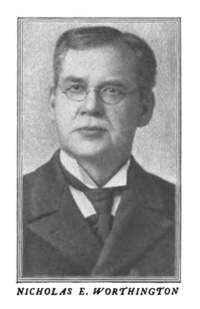 Nicholas E. Worthington. Nicholas Ellsworth Worthington (1836 - 1916) was one of the three commissioners appointed to the United States Strike Commission created by President Cleveland to investigate the strike and its causes. He was also a United States Representative from Illinois from 1883 to 1887 and a circuit judge in Illinois from 1891 to 1915. |
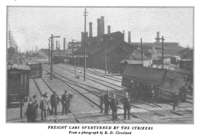 Freight Cars Overturned by the Strikers. From The History of the Last Quarter-Century in the United States, 1870-1895 (1896). |
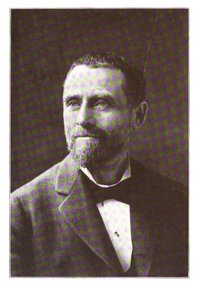 John Peter Altgeld. On July 3, 1894 President Cleveland ordered the federal troops to move into Chicago even though Governor Altgeld was not informed and no officials in Illinois requested federal troops. This greatly angered Altgeld and on July 5 he sent a strongly worded criticism to President Cleveland. |
 John D. Kernan. John D. Kernan was one of the three commissioners appointed to the United States Strike Commission created by President Cleveland to investigate the strike and its causes. Kernan was also an attorney and he served as the New York Railroad Commissioner from 1883 to 1887. |
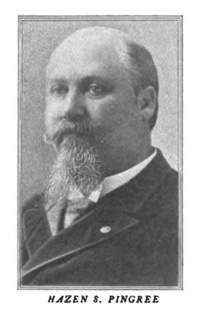 Hazen S. Pingree. Hazen Stuart Pingree (1840 - 1901) served as the Republican mayor of Detroit for four terms from 1889 to 1896. He was then elected governor of Michigan and served from 1896 to 1901. On May 11, 1894 employees of the Pullman Company went on strike. There were several attempts made to get the company to arbitrate the issues leading to the strike including from Mayor Pingree who claimed to have telegrams from the mayors of over 50 cities urging the two sides to enter into arbitration. But the Pullman Company refused all efforts to arbitrate the conflict. |
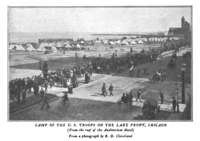 Camp of the U.S. Troops on the Lake Front, Chicago. Photo from Elisha Benjamin Andrews, The history of the last quarter-century in the United States, 1870-1895, Volume 1 (1896). |
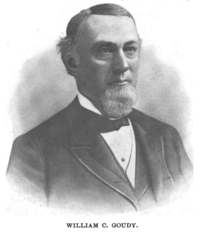 William C. Goudy. William C. Goudy (1824 - 1893) was the general counsel for the Chicago & Northwestern Railway Company in 1891 when Clarence Darrow accepted a part-time position in the legal department of the railroad. Goudy was also a prominent Democrat in Illinois. Goudy was also a founder and the first president of the Chicago Bar Association. According to one account, in "April of 1893 . . . William C. Goudy collapsed at his desk of an apparent heart attack in the legal department of the Chicago & Northwestern Railroad Company as he was working with his assistant, Clarence Darrow." Richard C. Cortner, The Iron Horse and the Constitution: The Railroads and the Transformation of the Fourteenth Amendment 125 (1993). |

